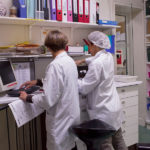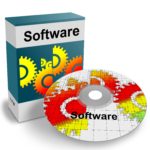New ‘sixth wave alliance’ to drive robotics strategy

CSIRO’s Data61 has announced the formation of the Sixth Wave Alliance (SWA) to develop a national robotics R&D strategy and create the critical mass required to address large-scale Australian and international challenges using robotics technologies.
Demand for robots is growing, with worldwide spending on robotics expected to reach US$188 billion in 2020. Robotics and autonomous system technologies have the potential to solve issues of safety and productivity across industries.
Organisations involved in SWA include Data61, AlphaBeta, Department of Industry, Innovation and Science, METSIgnited, NERA (National Energy Resources Australia), QUT, University of Sydney, University of Queensland and Woodside.
Other entities interested in advancing Australia’s robotics opportunity are also encouraged to join SWA.
The Alliance brings together Australian industry, research and government collaborators in order to promote and facilitate the adoption and creation of robotics and automation technology for the benefit of Australia.
SWA was borne from collaboration in development of the Robotics Roadmap for Australia , led by the ARC Centre of Excellence for Robotic Vision . A unified robotics industry can help assist Australia’s workforce, advance the economy with new business opportunities and address the nation’s challenges from limited resources to the spatial distribution of cities and hubs of industry.
The Alliance will focus its efforts on a range of industries primed for transformation through autonomous technologies. These include: defence, agriculture, oil and gas, mining, transport, and smart cities.
Other areas the alliance will address include STEM education, research and training.
The application of robotics into these sectors will have a positive impact for the humans working alongside them. For example, autonomous robots could be used for mapping unstable mining environments or automating long-haul freight transport.
Announcing the new partnership, Adrian Turner, the CEO at CSIRO’s Data61 underlined that tThe country’s robotics opportunity lies in using robots and sensors to capture information about complex environments and to automate tasks that would otherwise be completed by humans in high risk situations and at a greater cost.
As every sector becomes data-driven, areas like Australia’s healthcare, agriculture, manufacturing and mining industries are primed for enhancement via robotics and autonomous systems.”
“SWA will allow us to put Australia on the map as the global leader in robotics. The national robotics R&D strategy will create opportunities for the robotics industry to work with the Australian government and private sector to drive scale and increase Australia’s competitive on an international scale,” Mr Turner said.
Dr Sue Keay, the Chair of the Robotics Roadmap and Chief Operating Officer at QUT-based Australian Centre for Robotic Vision said “the formation of the SWA is critical to build a successful path to innovation for robotics R&D.
“SWA brings together complementary skills to solve problems, build human capacity, develop new technologies and encourage investment in an area where Australia already has a world-leading reputation.”
Miranda Taylor, CEO of NERA, welcomed the announcement and said that as a founding member, NERA would bring valuable industry knowledge into the challenges and opportunities faced by Australia’s energy resources sector from increased automation and digitisation.
“It is only by coming together and collaborating across industry, government and research groups can we ensure Australia addresses the challenges and harnesses the opportunities of an automated future not just in the energy resources sector, but for the entire Australian economy.”
For more information or to join the Sixth Wave Alliance, visit: Data61—Sixth Wave.








